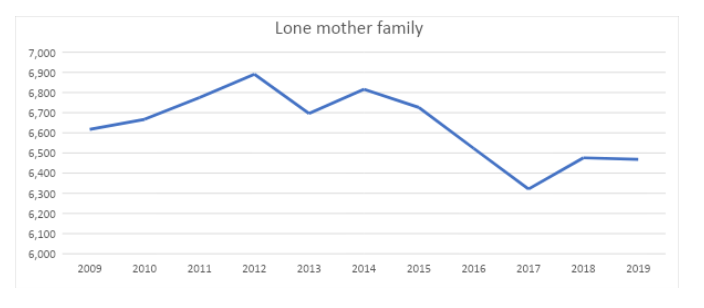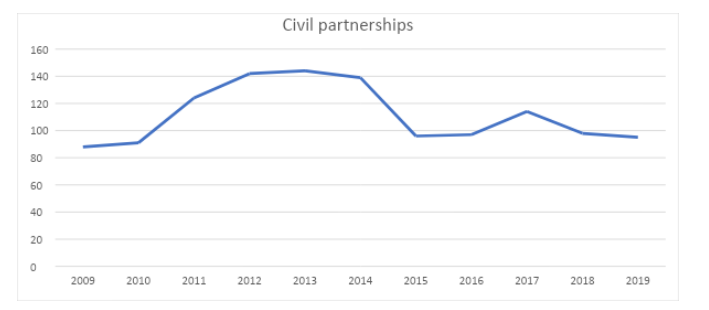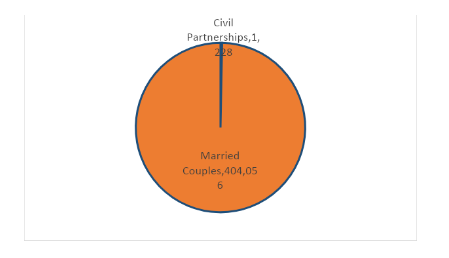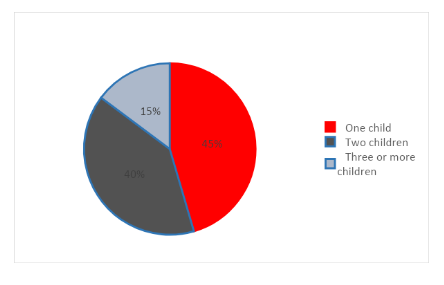Impact of Societal Norms on Families
Abstract
The fact that the society is dynamic implies that most of its units are also dynamic. One of the most fundamental units of any society is the family. A family forms a household, which later culminates in a society. Therefore, any change in the family and household structure is expected to lead to a change in society. Over the years, the type of families and households in the United Kingdom has rapidly changed. The change can be attributed to the change in societal norms; for example, in the 20th century, homosexuality was not embraced, and therefore it was scarce to find homosexual families. Besides, factors such as a reduced number of children in a family, high numbers of divorce rates, and embracing of individualism have really changed the shape and structures of families in the United Kingdom. Therefore, this paper will asses the changes experienced in the society by analysing the changing patterns of families and households in the United Kingdom in a bid to explain the underlying reasons behind such shifts. For those seeking sociology dissertation help, examining these shifts provides critical insights into how evolving family structures impact broader societal changes.

Marriage and Civil Partners
According to the data from the Office of the national statistics, the number of married couples is increasing in the United Kingdom in the last ten years from 2009-2019, as shown in figure 1. It could be an indicator that the country is experiencing low divorce rates, or it could just be a product of increased population and, therefore, more the high prevalence of married couples. Subsequent analysis will determine if this analogy is accurate. According to the United Kingdom law on divorce, if married partners with children divorce, children are likely to be under the care of their mothers. Therefore, in a country with high divorce rates, it expected that the number of single mothers/lone mothers should be somehow higher as compared to those societies with lower divorce rates. Therefore, this study would use the data from the number of lone mothers to ascertain whether it is true that the number of married couples in the United Kingdom is indeed increasing or the upsurge could be as a result of an increase in the population.

According to figure 2, it clear that the number of lone mothers is rapidly decreasing. Naturally, the number of lone families have an inverse correlation with the number of married couples. Therefore, from the statistical analysis, one can confidently conclude that as opposed to the popular notion that the institution of marriage is diminishing, the data shows that currently more people are in marriage as compared to the previous years.

Apart from the growing number of marriages among the residents of the United Kingdom, there is also a gradual rise of households with cohabiting partners. The number of cohabiting partners has been gradually rising in the last ten years, shown in figure 3.

As much, most people prefer cohabiting relationships as compared to the past years. The data shows that marriage has remained to be the most popular type of union. Figure 4 reveals that out of the total numbers of unions in the United Kingdom, only 8% of the population are cohabiting, while 92% of them are married.

Civil Partnerships
Currently, in the United Kingdom, only people of the same sex can enjoy civil partnerships, although there are calls for people of a different sex to enjoy the same rights. However, the data recorded by the Office of national statistics on civil partnership only comprise of same-sex partnerships. From figure 5, it is clear that since 2015, civil partnerships have been reducing as compared to the period between 2010 to 2014, when the country recorded the highest numbers of civil partnerships. Even so, it is essential to note that in comparison to the previous years, that is between the mid-1990s and the early 2000s, civil partnerships were shallow, as compared to the numbers, which is suggesting that Civil partnerships are also becoming an essential household in the United Kingdom.

However, if these numbers are compared to married couples (opposite sex), civil partnerships form a negligible percentage in the current household structure of the residents in the United Kingdom, as shown in figure 6. It could be an indicator of the social biases and prejudices on same-sex relationships.

Household structure
The data revealed that as opposed to the previous years, most people married people do not have children, as shown in figure 7. As much as the number of married households in the previous years were low, they recorded very low ratios of couples with no children as compared to the current situation. The shift to a high number of married couples with no children could be a result of the fact that most people have changed their perception of marriage from an institution that was meant for procreation to an institution that majorly focuses on companionship.

From the data, those households with children prefer to have only one child. According to figure 8, 45% of all the households with children have only one child, followed by two children at 40% and three children or more at only 15%. These results are a direct inverse of the family structure during the 1950s to 1980s, where more households had three children or more. Besides, at this time, most unions were perceived to be successful if the married couples had more children.


Conclusion
As much as marriage has proved to be the most preferred type of union, various changes are taking place that would have never been projected. For example, there is a significant increase in the number of civil partnerships in the current society as compared to the 1990s. Besides, the data suggest that most people have shifted their perspectives on marriage, from an institution that was majorly perceived to be meant for procreation, to an institution that is meant for companionship. It is evident from the growing numbers of married couples with no children, and those who have children prefer to have only one child as opposed to the previous years where the family was characterised by married couples with three children or more. The increase in childlessness in married couples and the preference to have one child could also be attributed to the increasing cost of living, which makes having children more expensive that most couples cannot afford. Generally, the marriage institution is not threatened by social dynamics as commonly thought.
- 24/7 Customer Support
- 100% Customer Satisfaction
- No Privacy Violation
- Quick Services
- Subject Experts



